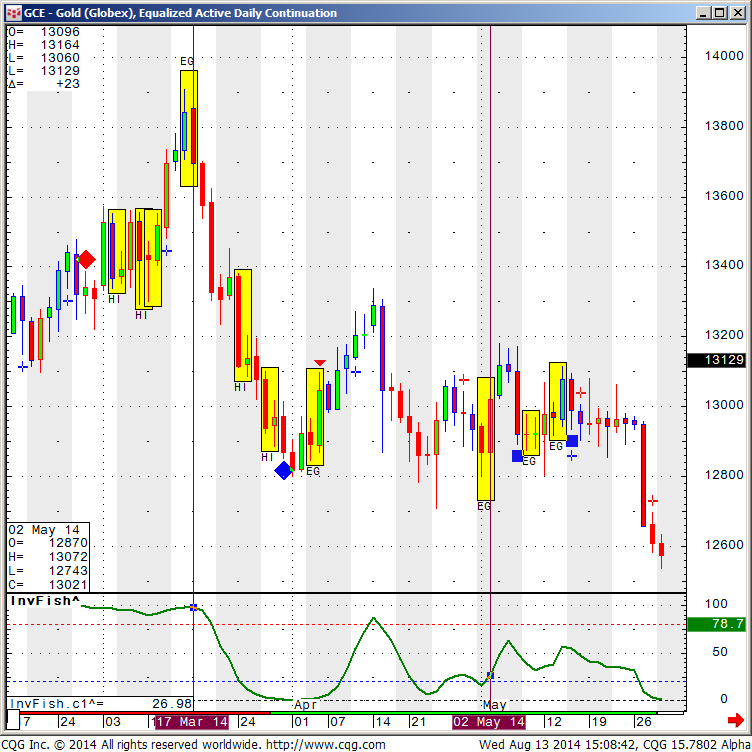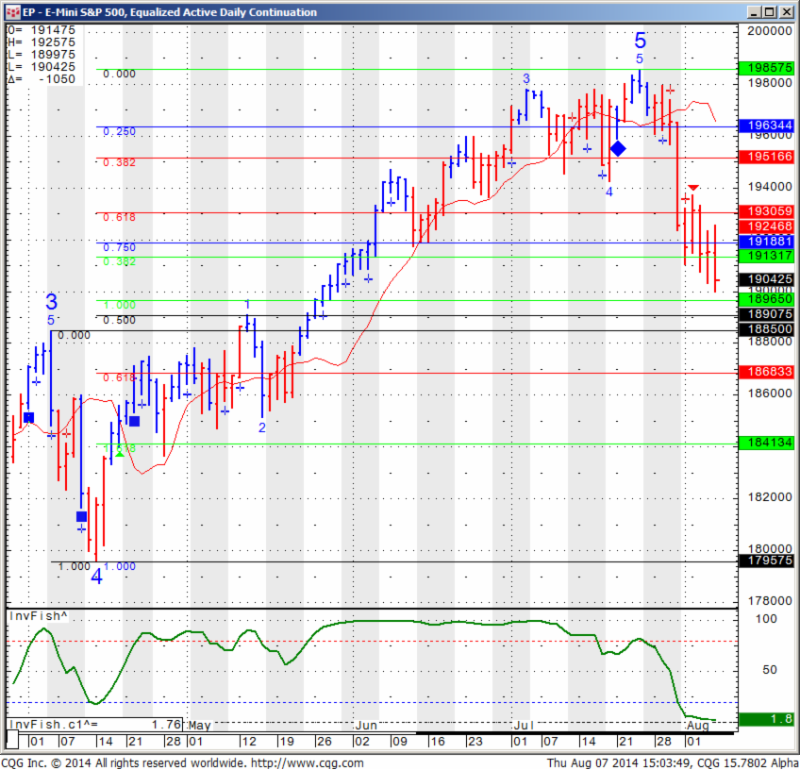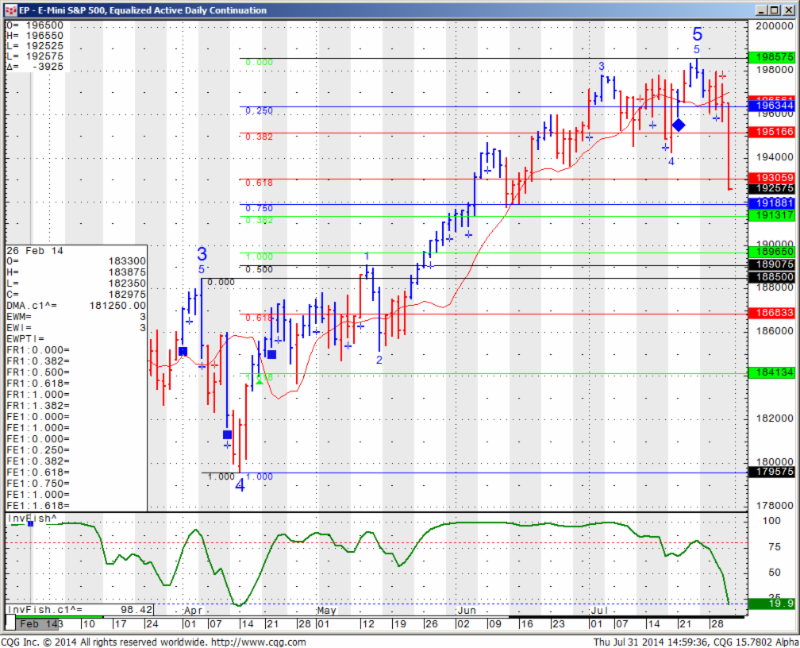Hello Traders,
For 2014 I would like to wish all of you discipline and patience in your trading!
So I was doing some research and signal evaluator work on some candlesticks formation to go along with some of the conditions I like to use and figured might as well share some of the basic knowledge with my readers…
The following is taken from my CQG trading/chart terminal. If anyone is interested in a free trial, feel free to email me or visit our CQG section on our website.
So today, two formations I started exploring:
1. Engulfing Bearish
The Engulfing Bearish formation is, of course, a bearish formation and therefore its symbol (EG) will always appear at the top of the formation. It represents the opposite of the Engulfing Bullish formation. Three criteria establish an Engulfing Bearish formation:
*The market has to be in a clearly definable up-trend, even if the trend is short term.
*Of the 2 candlesticks in the formation, the second candle’s real body must engulf the first candle’s real body.
*The second real body of the formation should be “down” while the first real body should be “up.”
2. Engulfing Bullish
The Engulfing Bullish formation is, of course, a bullish formation and therefore its symbol (EG) will always appear at the bottom of the formation. It represents the opposite of the Engulfing Bearish formation. Three criteria establish an Engulfing Bullish formation:
*The market has to be in a clearly definable downtrend, even if the trend is short term.
*Of the 2 candlesticks in the formation, the second candle’s real body must engulf the first candle’s real body.
*The second real body of the formation should be “up” while the first real body should be “down.”

Above is a daily chart of Gold futures, going back to March 17th 2014 where one can see a good example of the ” Bearish EG” formation and yet in the same exact chart you can see a failed “Bullish EG” formation on May 2nd 2014.
Will continue and explore a few other candlesticks formations over the next couple of weeks.
Continue reading “Gold Daily Continuation Chart – Levels & Reports 8.14.2014”


